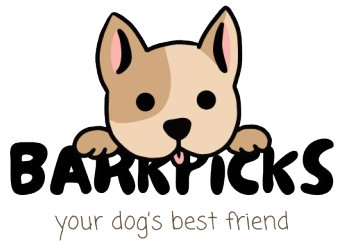The Neapolitan Mastiff, often referred to as the Mastino Napoletano, is a breed like no other. With its massive frame, loose wrinkled skin, and serious expression, the Neapolitan Mastiff exudes power and mystery. But beneath that fearsome exterior lies a gentle, loyal, and affectionate giant that has protected homes and families for centuries.
This ancient breed, known for its guarding instincts and unique appearance, makes a devoted companion for experienced dog owners. In this article, we’ll explore the history, physical traits, personality, care needs, and suitability of the Neapolitan Mastiff.
Origins and History
The Neapolitan Mastiff’s roots can be traced back thousands of years to ancient Rome. Believed to be descendants of the Molosser dogs of central Asia, these mastiff-type dogs were used in war and for protection by the Romans. Over time, they evolved into the breed we recognize today, particularly in southern Italy, where they were refined for guarding estates and homes.
The Neapolitan Mastiff remained relatively unknown outside Italy until the mid-20th century. Thanks to the efforts of Italian breeders, particularly Piero Scanziani, the breed was standardized and gained recognition in the international dog community. Despite their intimidating look, these dogs were never bred for aggression but rather as loyal and watchful protectors.
Appearance
The Neapolitan Mastiff is instantly recognizable and hard to forget.
- Size: Males typically stand between 26 to 31 inches at the shoulder and weigh 150 to 200 pounds. Females are slightly smaller but still very large.
- Build: They have a powerful, stocky frame with thick bones and a deep chest.
- Skin and Wrinkles: One of the breed’s most distinctive features is its loose skin and heavy facial wrinkles. These folds serve a protective function and contribute to its unique look.
- Head: Massive and broad with droopy eyelids and jowls. The dewlap (loose skin around the neck) is also prominent.
- Coat and Color: The short, dense coat can be blue (most common), black, mahogany, or tawny, often with minimal markings.
Temperament and Personality
Despite its fearsome appearance, the Neapolitan Mastiff is an affectionate, calm, and loyal dog.
- Protective: These dogs are natural guardians and will instinctively protect their home and loved ones. They do not require training to be watchful — it is part of their genetic makeup.
- Loyal and Devoted: They bond closely with their family, often preferring to stay close by rather than roam. They are gentle with children and tend to be very affectionate at home.
- Reserved with Strangers: The breed can be wary of unfamiliar people. Early socialization is key to ensuring they remain calm and confident in new situations.
- Quiet Watchdogs: Unlike many other guard dogs, Neapolitan Mastiffs do not bark excessively. They rely on their intimidating presence and calm authority.
Exercise and Living Conditions
Although large, the Neapolitan Mastiff has relatively low energy levels.
- Exercise Needs: Moderate daily walks and some playtime are usually sufficient. They enjoy relaxing and may be quite sedentary indoors.
- Space: While they can adapt to suburban or rural environments, they are not ideal for small apartments due to their size.
- Heat Sensitivity: Their heavy bodies and short snouts make them prone to overheating. Always provide shade and fresh water, especially in hot climates.
Grooming and Care
The Neapolitan Mastiff’s short coat is easy to maintain, but their skin folds require special attention.
- Brushing: Weekly brushing helps remove dead hair and keeps the coat clean.
- Wrinkle Cleaning: Their skin folds must be cleaned regularly to prevent infections and irritation. This is one of the breed’s most important maintenance tasks.
- Drooling: Neos are prolific droolers. Owners should keep towels handy and be prepared for mess, especially after meals or drinks.
Health and Lifespan
Like many giant breeds, the Neapolitan Mastiff is prone to certain health concerns and has a relatively short lifespan, typically around 7 to 9 years.
Common health issues include:
- Hip and elbow dysplasia
- Cherry eye (prolapsed third eyelid gland)
- Skin infections in the wrinkles
- Cardiovascular issues
- Bloat (gastric torsion), a life-threatening condition common in large dogs
Responsible breeders will screen for genetic conditions and aim to produce healthier dogs.
Is the Neapolitan Mastiff Right for You?
The Neapolitan Mastiff is best suited for experienced dog owners who understand the needs of giant breeds. While they are low-energy and gentle with their family, they need early socialization, consistent leadership, and special attention to grooming and health.
These dogs are not for everyone — their size, strength, and maintenance requirements are considerable. But for the right person, the Neapolitan Mastiff offers unwavering loyalty, protection, and a deeply affectionate bond.
Conclusion
With a history rooted in ancient Rome and a personality full of love and loyalty, the Neapolitan Mastiff is a breed that combines formidable strength with deep devotion. This gentle giant may be imposing to outsiders, but to its family, it is a calm and constant companion — a true guardian of both home and heart.







